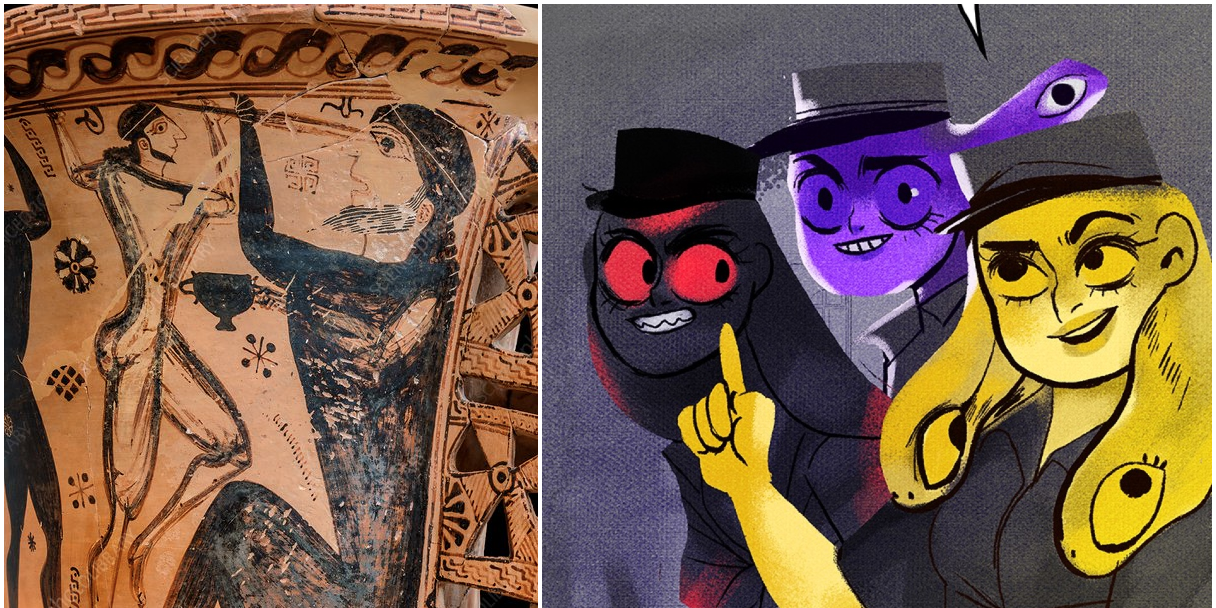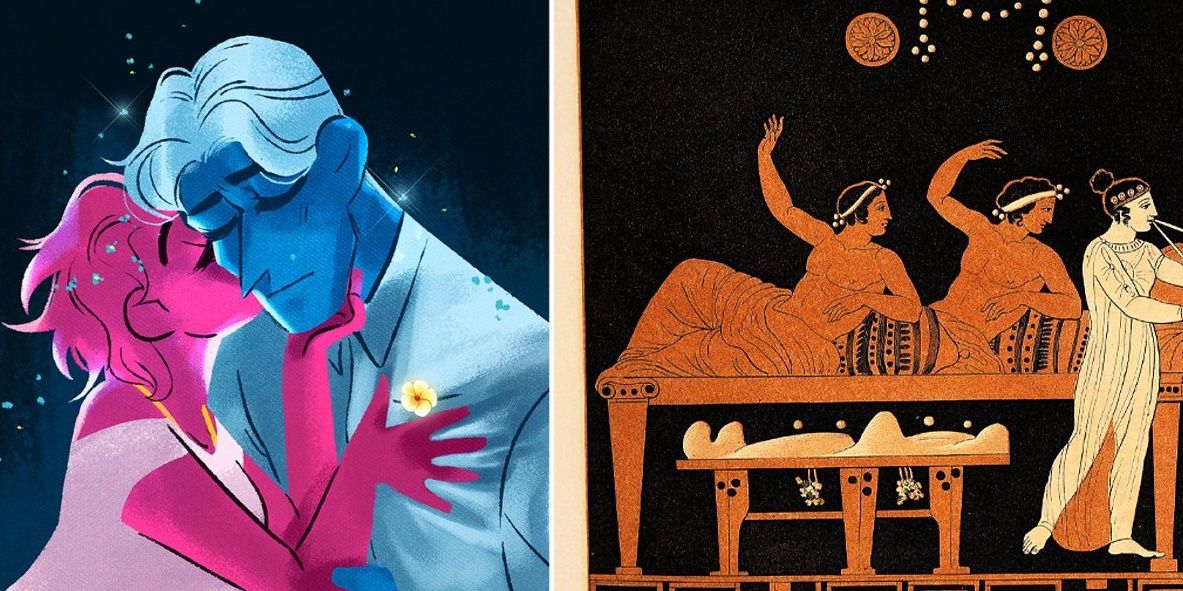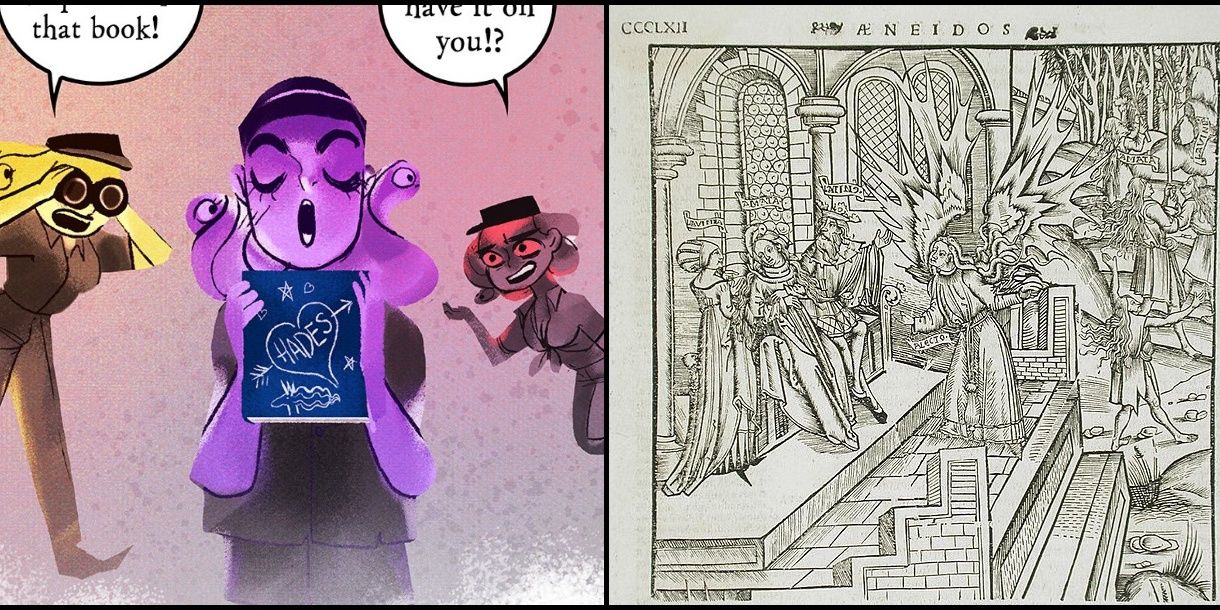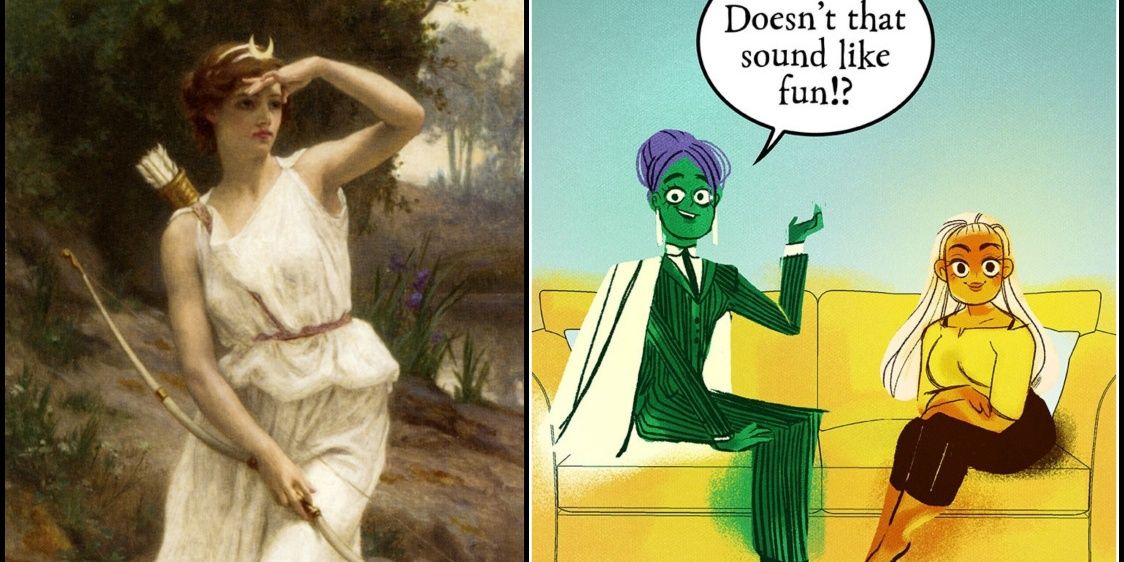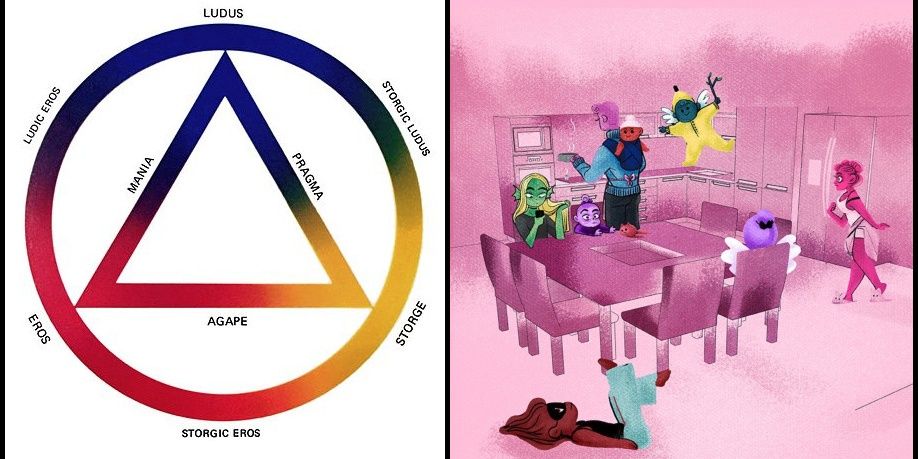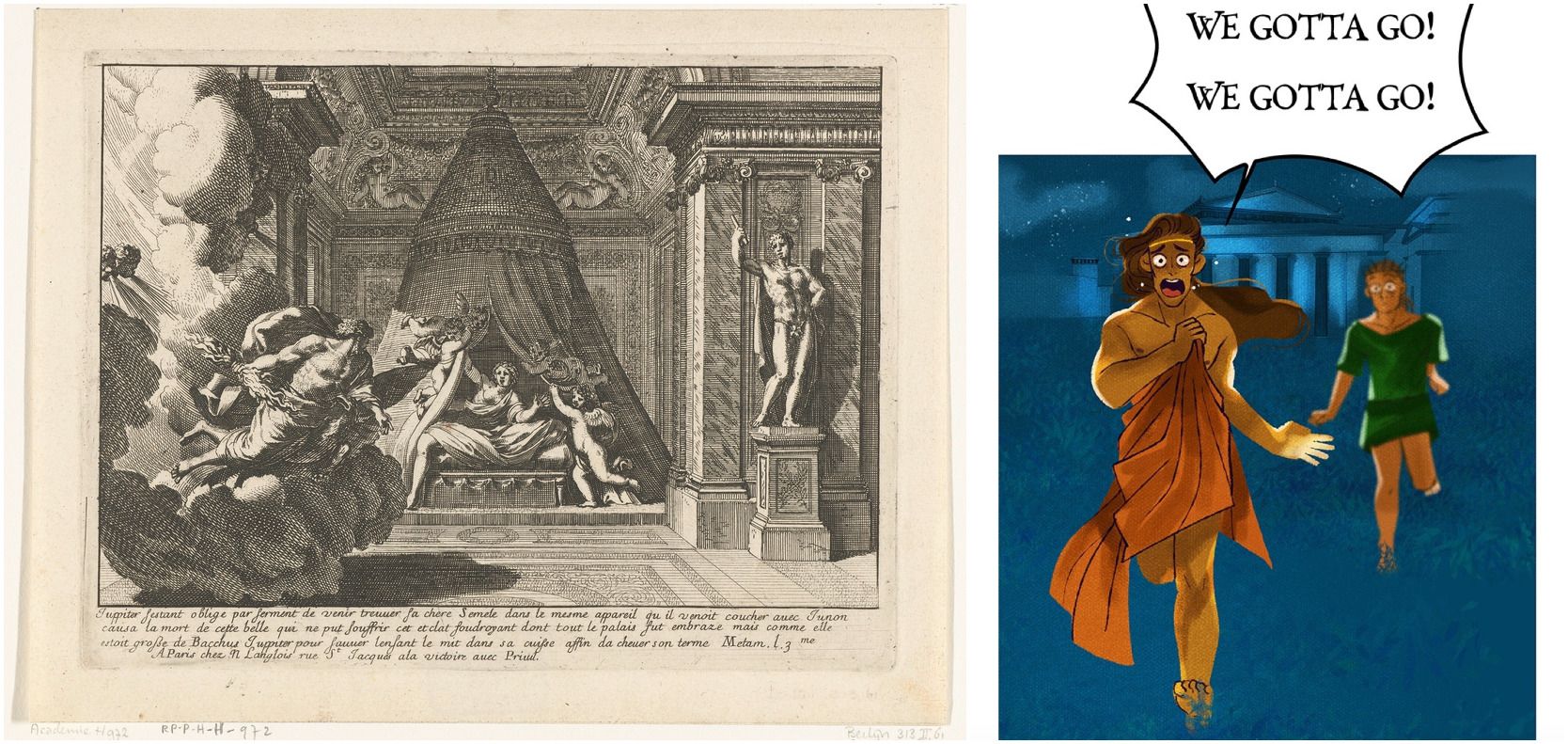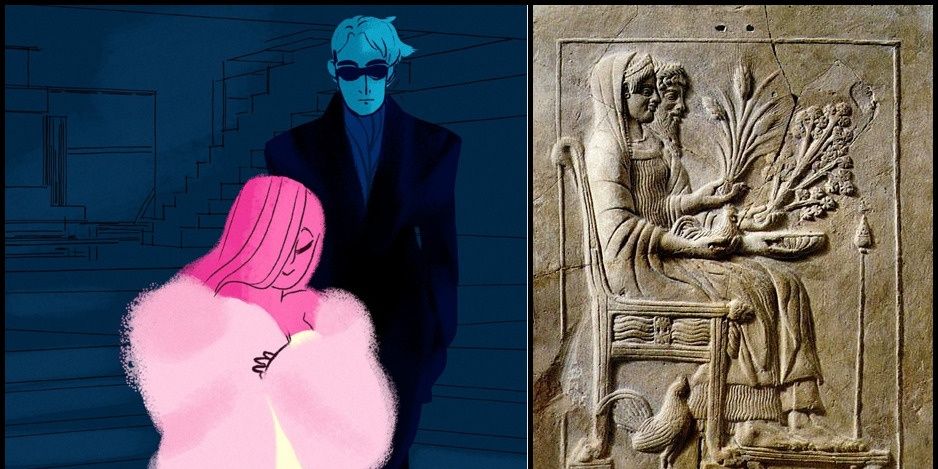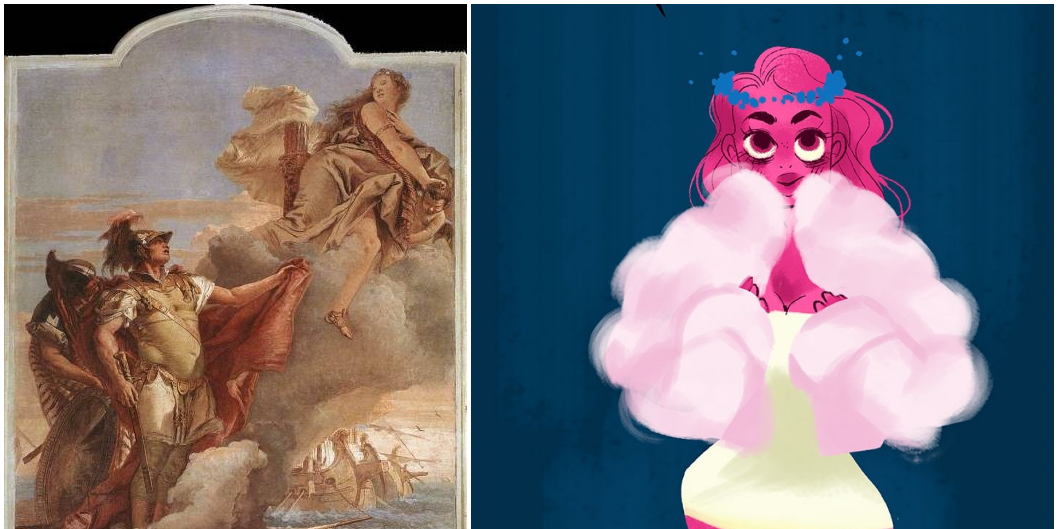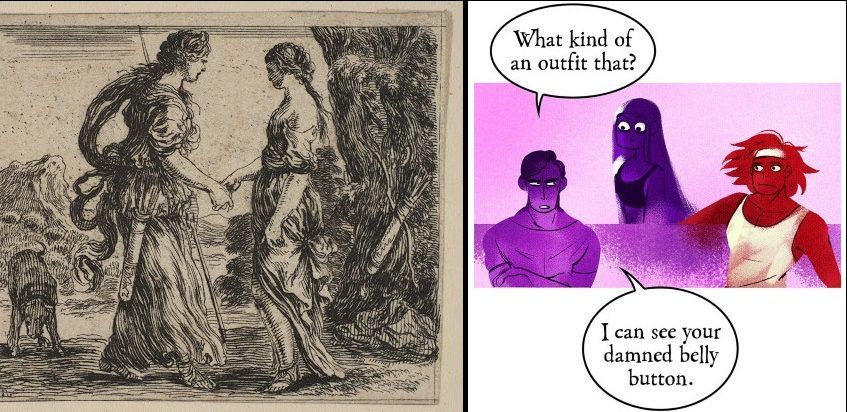Webtoon's Lore Olympus by Rachel Smythe has made an impact on the reception of classical mythology since its inception in 2018. Lots of dedicated Lore Olympus and Greek mythology fans have spent time describing the feminist updates to the classical myths or finding Easter Eggs for some of the more popular myths Smythe references in her work.
The following are Greek and Roman concepts and myths that will heighten your appreciation of the complexity and drama of Lore Olympus by adding depth to the decisions of the artist and the arc of her characters.
10 Plato's Symposium And The Definition Of Love
Much of what readers like about Lore Olympus is the way in which its characters strive to define what love means for themselves and how that idea of love differs for each individual based on their experiences. The Greek philosopher Plato wrote a story about a group of friends getting together at a dinner party (symposium in Greek) and arguing about competing definitions of love (eros).
The deepening of Persephone and Hades's relationship, the ending of broken one between Hades and Minthe, and breakfast bunch scene at a strip club with the three Olympian brothers all contain elements of the Symposium.
9 Allecto, Feminist Icon, And The War In Latium
Allecto spends a lot of her time in Lore Olympus pining after her boss, Hades, but in Virgil's epic poem Aeneid, she's an emissary of the goddess Juno and one of the great troublemakers of ancient mythology. Through her influence, Queen Amata and the Aeneid's main antagonist Turnus are riled up for battle.
The Trojans are similarly inflamed by a hunting accident involving Aeneas's son and a town's beloved domesticated stag (VII. 286-571).
8 Maidenhood And Maiden Goddesses Were A Kind Of Liberation Movement
A common misconception about the virginal status of some of the goddesses in the Greek pantheon is that their maidenhood is some kind of form of submission, when in fact, the truth is a lot more complex. In classical Attic Greek culture, married women lived fairly restricted lives. They spent most of their time inside the home. The movements of young women of marrying age were restricted to activities like drawing well water and going out on festival days. Girls were often married off to distant and not-so-distant relatives at a young age without any consideration to their desires. Once they were married, they went from obeying the authority of a father to that of their husbands, with harsh punishments if they did not observe strict customs of modesty. (This was not the case in all Greek city states: the philosopher Aristotle actually made fun of the Spartans for being a "gynocracy," a government of women, because men and women were treated equally there.)
The maiden goddesses represented a path for some women to retain their autonomy by remaining unwed. Athena and Diana's chastity means that they are not subservient to a husband-god. They need not follow the strict codes of behavior proscribed by the gender norms of the society.
7 Eros's Siblings And Their Meanings In Ancient Greek
Eros's family names come from different forms of love in the Greek and Roman worlds, as defined by writers like Plato in the Symposium and Aristotle in the Nicomachean Ethics.
The six forms of love appear to be taken from Canadian psychologist John Alan Lee's color wheel theory of love from the 1970s.
6 Semele's Story And Zeus "Blowing Off Steam"
Rachel Smythe is a master of understatement in her drawing of complex characters. The moment in Episode 94 when Zeus makes reference to a former infidelity when he was "blowing off steam" with a mortal named Semele seems innocent enough, but the original story is a lot more complicated. The myth of Semele is connected to one of the variants of the birth of the god Dionysus. In one version, Zeus in disguise consorts with a mortal named Semele. When Hera finds out, she tricks Semele into having Zeus swear an oath to appear in his true form, a lightning bolt. Semele's killed as a result.
In Lore Olympus, Zeus doesn't seem to feel too badly: "Every day," he says, "I think I'm going to be better and then I backslide." Smythe undercuts what could have been a much more serious flashback by giving voice to Semele, as she chases after a fleeing Zeus in disguise as a mortal. "Papa, stop!" she shouts. "I love him!"
5 Hades, "The Unseen One"
In Greek, Hades's name literally means "unseen," probably because his domain is underground out of sight of mortals, but maybe also because the spirits that he lords over are invisible. Attitudes towards Hades's worship in the ancient world were unusual--there don't appear to be any temples built in his name outside of one, which was closed to everyone except once a year and only for a priest.
Greeks don't appear to have dedicated sacrifices to him, possibly out of fear of his associations with death. The gods, however, do swear by the river Styx, one of the rivers of the Underworld.
4 Thetis And The Adultery Subplot
Thetis's destructive ambition (sometimes this word is simplified from the Greek concept of hybris, which just means "outgrowth") and her desire to have her boss Zeus at any cost is reflected in her reckless actions and her choice of clothing. Anyone who's spent some time with the first book of Homer's Iliad might also recognize the relationship between Zeus and Thetis as intimate.
In that story, Thetis performs hiketeia, ritual supplication, typified by kneeling while placing one hand on the benefactor's knee and another to his chin. The scene is famously depicted in Jean Auguste Dominique Ingres's 1811 painting.
3 Hera's Fur Coat
Much has been said about this photogenic fur coat from Lore Olympus. The coat's arc as a symbol of the relationship between Hades and Persephone is one of the tragic stories of the webcomic. Its cloud-like properties may remind some classically-inclined readers of another divinely inspired coat from the Aeneid. In that story, Aeneas's mother Venus conjures him a cloud (nebula in Latin) that grants him and his friends invisibility as they explore the North African town of Carthage. Even the words for cloud surround the shipwrecked sailors in the poem!
The connection between Carthage, the cloud, and a divine coat is especially nice, because this is the place in the Aeneid where the protagonist will fall into a whirlwind romance with the city's queen, Sidonian Dido. Readers of the Aeneid might feel that romantic tension a little bit more keenly in Lore Olympus because of its resonance from Aeneas's magic cloud cloak.
2 The Goddesses of Eternal Maidenhood Plotline
The violation of one's oath of chastity is no joke in the ancient world. In Rome, when it was suspected that one of the Vestal Virgins, a group of women priests charged with tending to the sacred flame of the city, violated her oath, she was buried alive in a cave as punishment. Another story about one of the followers of the cult of Artemis demonstrates the high stakes nature of living a life of maidenhood ("in devotion to others"). Callisto took a vow of chastity in order to join Diana's cult of worship.
One day, she's assaulted and impregnated by Zeus. The punishment for the violation of her vow is chastity--by any means--is death, so she hides the pregnancy as best she can, but one day while she's bathing with her fellow worshipers, she can no longer hide her body. Artemis turns her into a bear and her son grows up to--unwittingly--hunt and kill her.
1 Violations of Hospitality
Xenia or the ancient value of guest-friendship is the foundation of Greek culture. Violations of xenia are featured in the oldest existing pieces of Western literature we have. In Greek tragedy, the furies are a triad of ancient goddesses, responsible for enacting retributive justice against those who violate this sacred law.
In Lore Olympus, three female goddesses--with snakes for hair who share the same name as the furies from classical mythology--are responsible for punishing the paparazzi who published a photo of Hades and Persephone out together.

